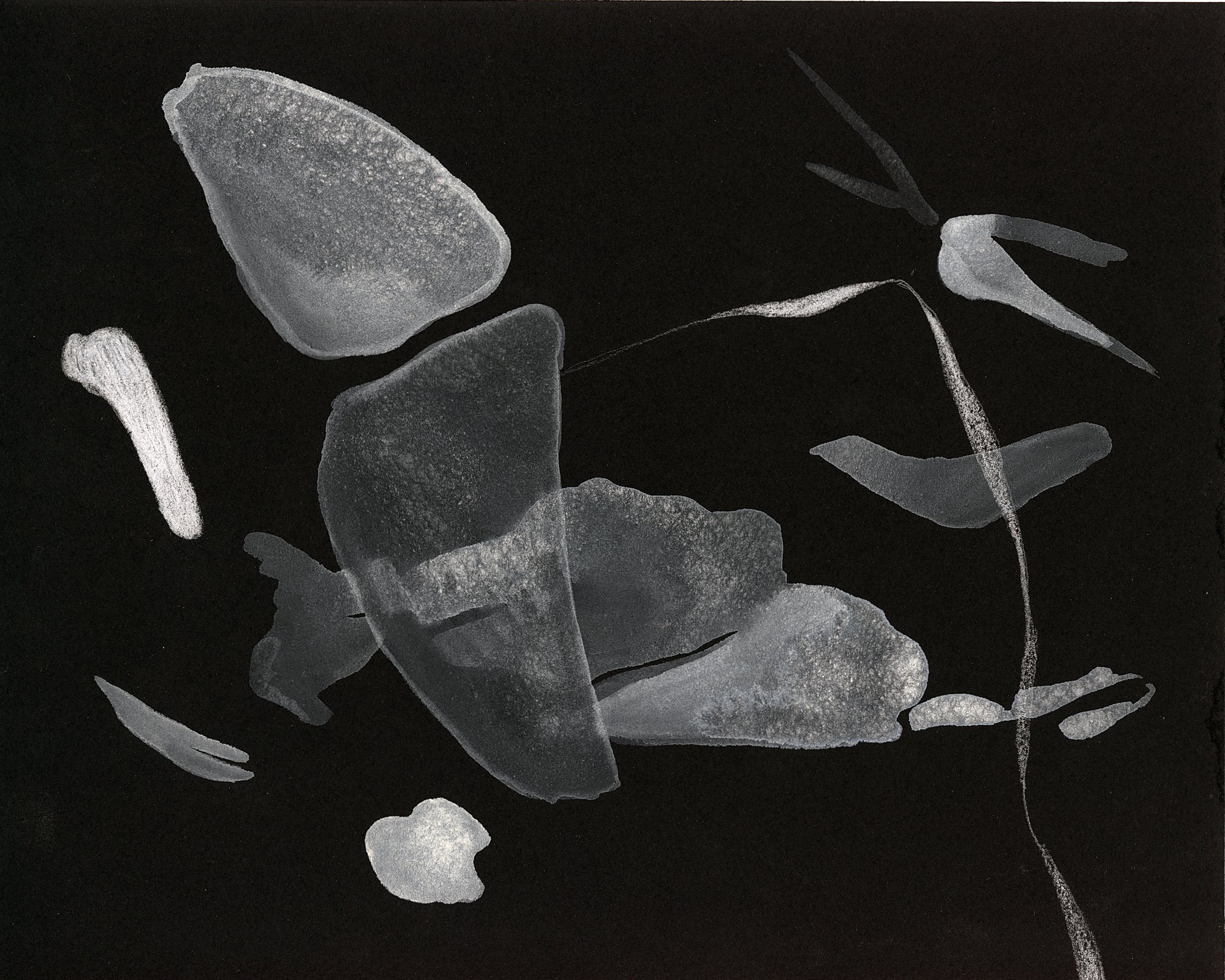In my professional role as a medical illustrator, I'm often drawn to a good metaphor. As a patient, the allure of metaphor can be dangerous.
Read moreA Sestina in Honor of Tia Forsman’s “Remnant” by Lynn Lawrence
“Radiographs serve as distilled moments of a human narrative,
An illness experience in greyscale” (From “Remnant” by Tia Forsman in the Spring 2022 Intima)
Sea glass/cutglass/eyeglass/stonefish/boomerang, Forsman’s remnants
Arrayed/x-rayed on the nightblack ocean floor of shapes and shadows.
From the French : to “rest”; to “remain”, “left over”; an underwater x-ray.
Overlapping, edges blurred, tenderly floating in an uncertain narrative.
This isn’t an x-ray. It just looks like one. Like medicine, a “grey area”
Forman is bilingual.. She paints in watercolor. She speaks in radiology.
We’re Invisible, Too: Showing Respect for Healthcare Workers by Cheryl Bailey
A retired gynecologic oncologist reflects on her own career and realizes how watercolor artwork can allow for even healthcare providers to be seen.
Read moreThe Healing Power of Empathy: Does it Exist? Can it be Acquired?
In this reflection, a retired surgeon examines the research findings of evidence-based medicine to uncover whether empathy, in addition to the principles and practice of narrative medicine, can facilitate deeper healing.
Read moreHow to Write About Cancer: How Poetry Can Break the Rules by writer Lynne Byler
Recently, I read Adam Conner’s short story “How to Write about Your Cancer” (Fall 2022 Intima) with amusement and recognition. And if I transform the rules in it to a scorecard, my poem, “Minds Go Where Bodies Can't” ends in the red.
Read moreThe Importance of Providing Compassionate Palliative and End-of-Life Care
A writer reflects on her own mother’s experience with death and dying and argues for the greater recognition of palliative care in the clinical encounter.
Read moreObjectivity versus Art: A Reflection on Technology in Medicine
A physician-novelist ponders the troubling implications of the increasing technologization of health care and its encroachment on the art of medicine.
Read moreLet Me Speak My Free Mind into You: Seeking Genuine Connection in Medical Practice
A medical student examines two poems published in this journal in order to advocate for genuine connection in medical practice between patients and physicians.
Read moreThe Reduction of Human Life and Tight Narrative
Writing against the backdrop of her husband’s stay in hospice care, a retired professor examines how the reduction of human life in the midst of suffering can be summarized in succinct narrative.
Read moreThe Beautiful Surprise
What is the beautiful surprise that can be found in the clinical encounter between patient and physician? A writer and nurse explains.
Read moreOn Healing, Suffering, and End-Of-Life Care
A medical student reflects on two pieces of fiction published in this journal that deal with the duality of suffering and healing.
Read moreDescribing Cancer with Imagery and Metaphors by Sarah Smith, MD
A family physician considers the importance of metaphors and imagery when grappling with life-threatening, unimaginable illness.
Read moreWaiting: A reflection on anticipating a diagnosis by poet RN Amy Haddad
A nurse, poet, and educator ponders the lot of patients—one that often includes loss of identity, dislocation in time and space, and of course, waiting.
Read more

